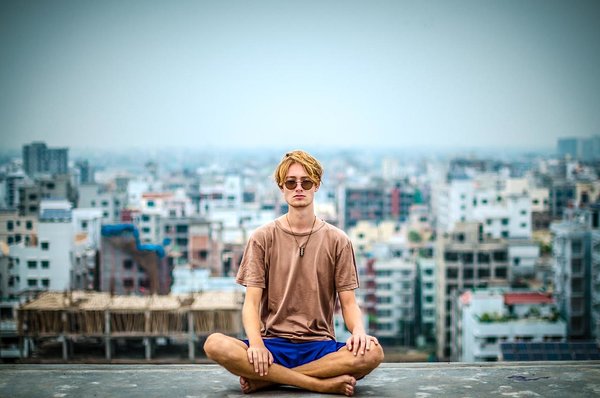Meditation is like a university of self-development. A public university accessible to all.

Tervis Pluss magazine wanted me to share my meditation experience. The following is written in response to their questions.
In 2012, after the first year of Ayurvedic studies at the European Institute of Vedic Studies in Switzerland, I did an internship in India, where I met Australian Tim Mitchell. Tim is a Vedic meditation teacher. Previously, I had encountered meditation in yoga classes, but it did not result in a daily self-motivating experience. I had an interest in meditation, because meditation has an important place in Ayurveda, Ayurvedic psychology, and also in modern psychology. Psychology has been my interest and academic background. I invited Tim to Estonia and we put together a group of meditation enthusiasts with friends and acquaintances. Tim has now been to Estonia three times to teach Vedic meditation and once did a meditation retreat here. The meditation groups grew into a group that meditates together once a month. Group meditation is a powerful experience. I meditate 1-2 times a day, usually for 20 minutes at a time. To start the meditation, I do a 5-minute Nadi Shodana pranayama, which helps to enter inner silence faster. What are the effects of meditation? My most immediate critics – my children – have given me feedback. I have four children, the eldest of whom already lives separately. The kids say I’m so normal and they’re amazed that I don’t get nervous anymore. The feeling of presence and love is what meditation and Ayurveda have given me.
I am now an Ayurvedic practitioner and teach meditation to my clients in addition to other practices. Usually, people who have not come across meditation think that meditation is some special skill that requires crazy effort and is available only to especially highly spiritually developed people. I will try to disprove this opinion. Meditation is the most natural and best rest for body and mind. By meditation I mean sitting motionless in a comfortable resting position, back supported, eyes closed in silence without purpose, simple introspection, experiencing and acceptance. It is within everyone’s reach, and there are certainly many who do it without calling it meditation. This quiet being, without the application of will, purpose and action, is necessary in order to distinguish the stimuli and needs coming from outside of us from our inner needs. Sitting quietly and focusing on ourselves reveals our true needs. It is easier to start meditating with someone who can support, guide and motivate you. One can start by using mantras such as in the Vedic meditation and Transcendental Meditation tradition, or Nadi Shodana pranayama as in the Ayurvedic tradition, to make it easier to calm down. And all you need to succeed is to sit in a chair every day, close your eyes and be still as an observer. This is meditation, and whatever happens at that time is right and best at the moment. When the body is tired, it takes what it needs and sleeps. Let him sleep, the next time will be a different experience. The meditation experience can be different every time. Such a simple meditation creates a feeling of contentment and love, but does not make you passive. Meditation is like a university of self-development but a people’s university, accessible to everyone.

